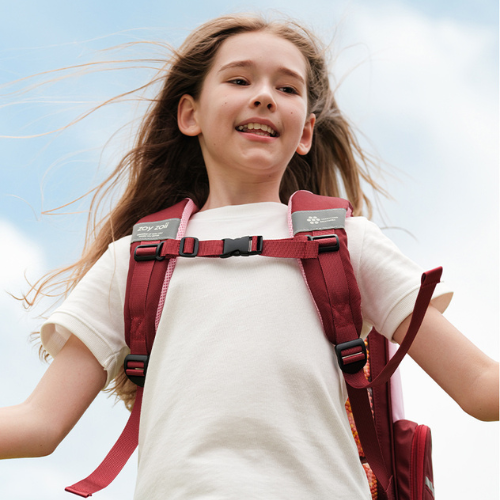In Australia, more and more parents are becoming conscious of their children’s physical development and mental well-being. From choosing organic produce to using additive-free skincare, families are doing their best to provide the healthiest environment possible. But have you ever thought about one item your child uses every single day — their backpack?
From kinder to prep and throughout primary school, these early years are crucial for a child’s physical development. Children not only carry their backpacks to and from school each day, but they also run, play, and explore on playgrounds, grassy fields, and school gardens. A poorly designed backpack can silently contribute to shoulder and neck strain — or even affect spinal development over time.
What Is an “Ergonomic Backpack”?
Ergonomics is the science of designing products that fit the natural structure and movements of the human body. An ergonomic backpack for children should:
- l Distribute weight evenly across shoulders and back
- l Fit closely to the natural curve of a child’s spine
- l Encourage upright posture and healthy walking habits
- l Reduce muscle fatigue caused by poor weight balance
For children aged 3 to 6, whose bodies are still developing, carrying the wrong backpack every day can lead to:
- l Increased risk of hunching or spinal curvature
- l Chronic tension and pain in the shoulders
- l Imbalanced walking posture
- l Excessive pressure on the shoulders during running or jumping
What Features Make a Backpack Truly Ergonomic?
When choosing a backpack for your child, look for these key ergonomic features:
✅ 1. Wide and Soft Shoulder Straps
Thin straps can dig into your child’s shoulders like ropes, cutting off circulation and causing discomfort. Ergonomic backpacks use broad, padded straps to distribute weight gently and evenly.
✅ 2. Supportive Back Panel
High-quality children’s backpacks include cushioned, breathable back panels, which improve comfort and help maintain a healthy standing posture.
✅ 3. Balanced Weight Distribution
The backpack’s centre of gravity should be close to the spine to prevent children from leaning forward. Smart internal compartments can also help kids learn to organise and pack efficiently.
✅ 4. Chest or Waist Straps
These extra straps help keep the backpack firmly in place, reducing shifting and bouncing — especially helpful for active kids who run, jump, or climb stairs regularly.
Jimoo’s Ergonomic Selection Philosophy
As a team of educators working closely with children across Australia, we at Jimoo deeply understand how crucial early physical development is. That’s why every backpack in our Forest Series is carefully selected for its ergonomic features — designed to help children carry with comfort, confidence, and care from the very start.
A Quick Parent’s Guide to Choosing the Right Backpack
When shopping for your child’s backpack, keep the following tips in mind:
✅ Choose lightweight materials
✅ Check if shoulder straps, back panel and chest buckles are well designed
✅ Make sure the size is appropriate — the backpack should not exceed your child’s back height
✅ Look inside: do the compartments encourage organisation and even weight distribution?
Final Thoughts
At every stage of a child’s growth, it’s our job to provide the right support. A good backpack might seem like a simple everyday item — but behind its design lies the foundation for healthy posture, good habits, and a happy school experience.
Give your child the gift of comfort, health, and confidence — one step, one backpack at a time.

